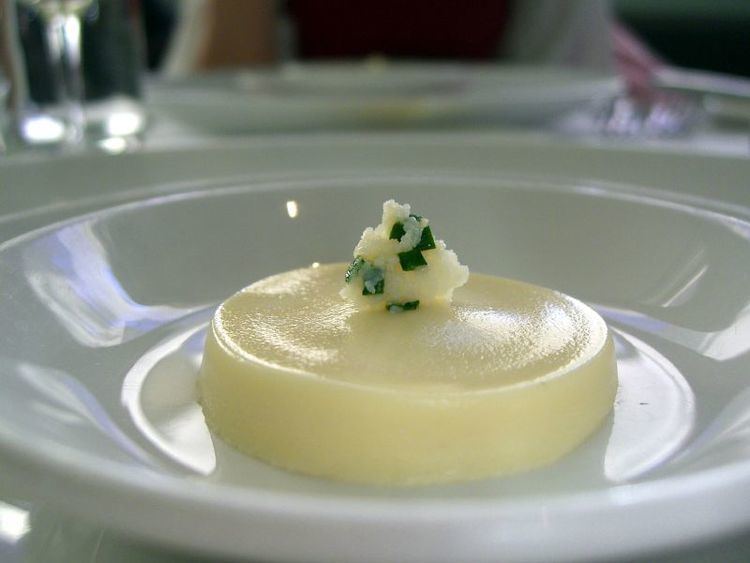Alternative names Amuse-gueule | ||
 | ||
An amuse-bouche [aˌmyzˈbuʃ] (plural amuse-bouches) or amuse-gueule [aˌmyzˈɡœl] is a single, bite-sized hors d’œuvre. Amuse-bouches are different from appetizers in that they are not ordered from a menu by patrons, but are served gratis and according to the chef's selection alone. These, often accompanied by a complementing wine, are served both to prepare the guest for the meal and to offer a glimpse into the chef's approach to the art of cuisine.
The term is French, literally translated as "mouth amuser". The plural form is amuse-bouche or amuse-bouches. In France, amuse-gueule is the proper term normally employed in conversation and literary writing, while amuse-bouche is a euphemistic hypercorrection that appeared in the 1980s on restaurant menus and is used almost only there. In French, bouche refers to the human mouth, while gueule refers to the mouth or snout of an animal, and is used as a derogatory term for mouth or face.
Use in restaurants
The amuse-bouche emerged as an identifiable course during the nouvelle cuisine movement, which emphasized smaller, more intensely flavored courses. It differs from other hors d'œuvres in that it is small, usually just one or two bites, and preselected by the chef and offered free of charge to all present at the table.
The functional role of the amuse-bouche could be played by rather simple offerings, such as a plate of olives or a crock of tapenade. It often becomes a showcase, however, due to the artistry and showmanship of the chef, intensified by the competition among restaurants. According to Jean-Georges Vongerichten, a popular New York celebrity chef with restaurants around the world, "The amuse-bouche is the best way for a great chef to express his or her big ideas in small bites".
At some point, the amuse-bouche transformed from an unexpected bonus to a de rigueur offering at Michelin Guide-starred restaurants and those aspiring to that category (as recently as 1999, The New York Times provided a parenthetical explanation of the course). This in turn created a set of logistical challenges for restaurants: amuse-bouche must be prepared in sufficient quantities to be served to all guests, usually just after the order is taken or between main courses. This often requires a separate cooking station devoted solely to producing the course quickly as well as a large and varied collection of specialized china for serving the amuse. Interesting plates, demitasse cups, and large Asian-style soup spoons are popular choices. In addition, the kitchen must try to accommodate guests that have an aversion or allergy to ingredients in the amuse.
